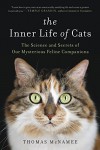Currently Reading






Find me elsewhere:
Medievalists.net: Old Norse Influence in Modern English: The Effect of the Viking Invasion
 Abstract: The Vikings from Scandinavia invaded the British Isles during the late eighth century. They prevailed there for the next 300 years, until the Normans arrived. Despite having been such a dominant force they left behind diminutive evidence of their reign. That was the general assumption up until the second half of the nineteenth century when philologists began investigating English. Their investigations successfully established the definite evidence of the Vikings language in English.
Abstract: The Vikings from Scandinavia invaded the British Isles during the late eighth century. They prevailed there for the next 300 years, until the Normans arrived. Despite having been such a dominant force they left behind diminutive evidence of their reign. That was the general assumption up until the second half of the nineteenth century when philologists began investigating English. Their investigations successfully established the definite evidence of the Vikings language in English.
The Vikings spoke a language called ‘Old Norse’, which today is an extinct language. Old Norse and Old English were in many ways similar since they belonged to the same language family, Germanic. Therefore, the Old Norse constituents integrated with ease into Old English. These borrowings went undetected for centuries but remain in the language up to the present-day.
It is estimated that there are around 400 Old Norse borrowings in Standard English. These borrowings are amongst the most frequently used terms in English and denote objects and actions of the most everyday description. This thesis determines which aspects of the language were and still are influenced by Old Norse and if these borrowings are still productive in Modern English. Moreover, it examines the varied influence Old Norse had on different English dialects.







 16
16  4
4 